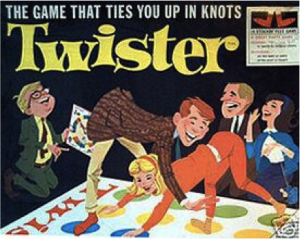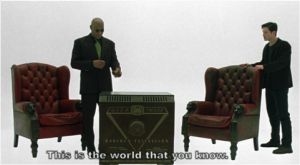How to be creative (Even if you think you aren’t)

The course is led by Shed Simove of shedsimove.com and the author of Success or Your Money Back. His novelty products have sold over a million units and he gives corporate presentations about success and creativity.
Shed Simove spent five long years writing a book about how to be successful. Then he spent another year trying to get it published.
But once it was released, the book languished at #35,000 on Amazon’s list of bestsellers.
“I was really depressed about this because I think [the book] has worth,” says Shed, a novelty product entrepreneur.
After that experience, Shed tried a different approach. He developed a new book idea, and just nine days later it ranked 44th on Amazon.
The book, called What Every Man Thinks About Apart from Sex, is completely blank inside. “[It’s] become a worldwide phenomenon,” says Shed.
In his Mixergy course, Shed’s shares the creative process he’s used to create his products and sell more than a million units. Here are three tactics you’ll learn in the course.
1. Be a MythBuster
 Self-imposed rules and commonly held beliefs kill creativity.
Self-imposed rules and commonly held beliefs kill creativity.
Human rules “come from someone’s brain,” says Shed. “And I always find it fascinating how we are entrenched with certain beliefs. I think you’ve got to be very careful about beliefs because sometimes [they] strongly direct our actions, and you’ve got to be aware of that.”
For instance, Shed wanted to create his own currency, but thought it was illegal. So what could he do?
Put myths to the test
When Shed thinks his own ideas are impractical, impossible, or illegal, he stops to question his beliefs.
So instead of immediately dismissing his currency idea, he researched it.
“I found out it’s not illegal to make your own currency,” he said. “Gift vouchers that companies like Walmart give…are in fact their own currency. They’re just a piece of paper that translates the paper into product.”
Shed designed and printed his own note, then tested its value on eBay. “Amazingly, this sells,” he says, “and now has an approximate value of 1.52 pounds, which is a better exchange rate than most currencies.”
2. Add a Twist
 To be successful, your idea can’t just be creative. It also has to inspire people.
To be successful, your idea can’t just be creative. It also has to inspire people.
“And in order to be inspiring, you have to be inspired,” says Shed.
But there’s no clear-cut way to “get inspired”. And just because something inspires you doesn’t mean it’s going to inspire your customers!
So how do you come up with an idea that will be a hit?
Spin off a success
Put a new twist on a popular idea.
“Look around you at what’s engaging people,” says Shed. “Can you twist it for your own ends? Because if it’s good idea and is popular with people, maybe there’s something you can do that’s similar.”
For example, Shed saw that a lot of companies sold candles that spell out “happy birthday”. The candles were selling, but they weren’t very clever.
“I did much more fun phrases like ‘Lost Count’ and ‘21 Again’ and my best-seller, ‘You’re Old.’ ‘You’re Old’ has sold over 300,000 units.”
3. Don’t Just Tell Them
 Everyone knows what it feels like to share an exciting new idea, only to be shot down.
Everyone knows what it feels like to share an exciting new idea, only to be shot down.
“[That] can take the wind from your sail and stop you from developing your new idea,” says Shed.
In fact, it happened to Shed so often that he coined a term for it: negative magnets, or negnets. “A negnet is when you tell someone your idea and their negativity and the crease of their brow or even their outright words [say], ‘That’s a rubbish idea’” says Shed.
But the real problem isn’t that your friends are all jerks. The real problem is that it’s difficult for people to imagine what your product will look like and how it will work.
So what’s the best way to share your idea and avoid rejection?
Show them
Build a cheap prototype before you share your idea.
“Any idea in the whole world can be brought to life cheaply,” says Shed. “Everything can be done. For a movie, you can do a short video on YouTube. For a skyscraper, you can do a 2-D visualization.”
Once you have a prototype, people are more likely to understand your idea and collaborate with you, rather than shooting it down outright.
“It’s really important to avoid negnet, get your idea going, and even if you notice it’s not so good halfway through, that’s fine,” says Shed. “Then get other people involved when you’ve brought it to life in a 2-D or 3-D way, and they’ll help you make it even better.”
Written by April Dykman. Production notes by Jeremy Weisz.
